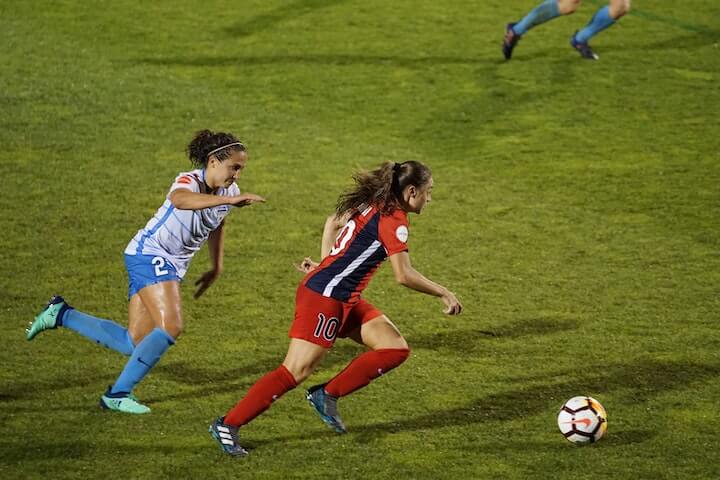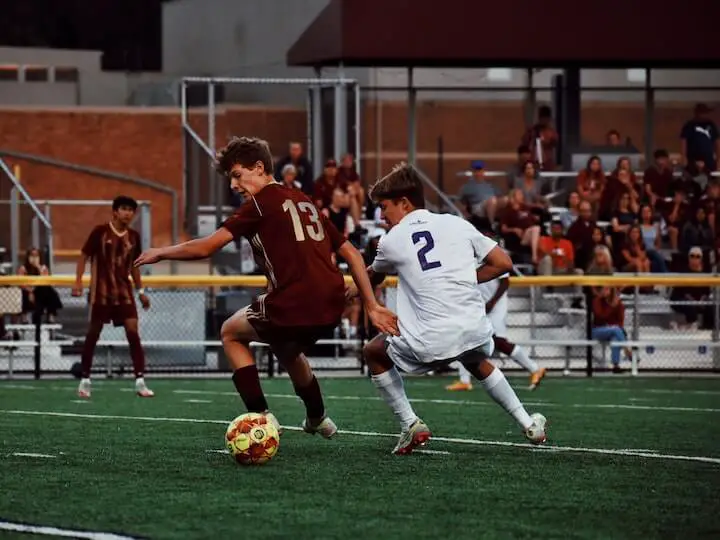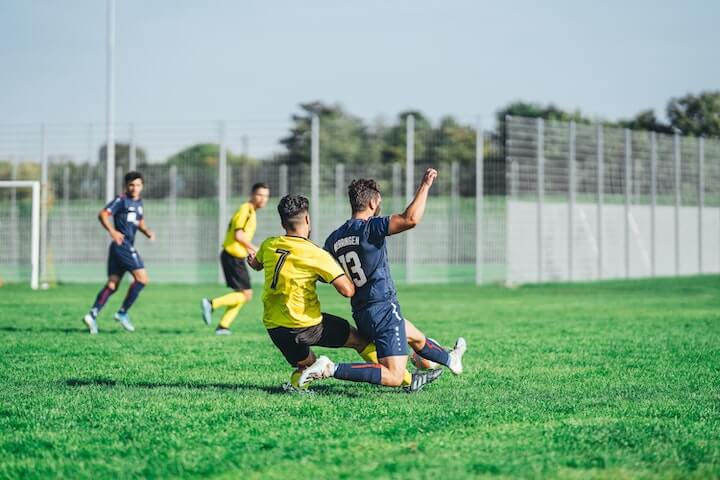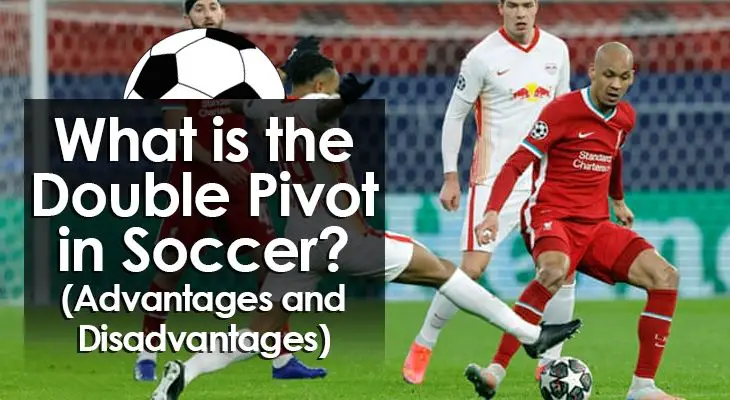What is a Double Pivot in Soccer? (Full Explanation)
To put it as simply as possible...
The term “double pivot” in soccer refers to a pair of holding midfielders in the team’s formation.
It's most commonly seen in a 4-2-3-1 but is also usable in other less-popular formations.
When used with the right players, the double-pivot usually gives the midfield a very strong base, providing symmetry that allows the attacking players more freedom to move and create.
In this article, we review the origin of the role, its tactical execution, pros and cons, and modern-day examples.
Let’s get into it!
The Tactical Role of a Double Pivot
The tactical roles of a double pivot vary according to the specific style of a manager, and can even change throughout a game.
Typically, teams use a double pivot to protect the defense and choke the space available for the opposition to initiate counterattacks.
This is especially true in tactical setups where the attacking players have a lot of freedom and less defensive responsibilities.
The double-pivot sits in the space between the defense and the attacking midfielders, and the players in it are required to be disciplined with the ball, distributing it intelligently while maintaining the positional discipline to limit space between the lines if possession is lost.
In some cases, the existence of a double pivot in a tactical setup is not obvious until the game is in full flow.
For instance, a 4-3-3 formation with a single pivot as the lone number 6 could morph into a double pivot during the game.
This can happen when the single-pivot holds their position, but one of the two central midfielders is given a box-to-box role.
Depending on the phase of play, that box-to-box midfielder will occasionally play alongside the single pivot.
This is either to provide an extra body in defense or to help receive and carry the ball forward during attacks.

Benefits of the Double Pivot
1. Better Midfield Coverage
A major benefit of playing this way is that the midfield - especially the defensive third of it - has more cover.
In a single pivot, the defensive midfielder will often have to cover an immense amount of ground over the course of a match.
A double pivot, however, ensures that two (2) players share the burden -- reducing the chances of getting caught out of position or overloaded.
2. Outnumber the Opponent's Attack
A double pivot automatically gives the team a numerical advantage against the opposition’s attack, as most teams in modern soccer line up with one striker in the middle.
While the center-backs deal with the striker, the players in the double pivot can provide support.
They can also extend that support to the full-backs on either flank to outnumber the opponent’s wingers / attacking midfielders.
3. Attacking Phase
When on the attack, a double pivot can also be beneficial...
It allows a smoother transition from defense to attack as the two (2) players can easily combine to break the opposition's defense lines across the midfield.
If the team plays a single pivot who is their primary outlet for ball progression, there will be many instances where a side of the pitch is open while the pivot tries to provide a passing option on the other side.
This problem is non-existent with a double pivot as the second player can cover one side while the first one provides a passing option on the other.
Disadvantages of the Double Pivot
1. Hinders Natural Creators
If a team’s midfielders are naturally inclined to be creators, then playing them in a double pivot can hinder their individual performances.
An example is Sergio Busquets of Barcelona who, despite being a defensive midfielder, he has a style of play that requires a lot of creativity on the ball.
If Sergio was played in a double pivot, his performance would not be as strong as when playing in a single pivot.
2. Concentration and Communication
Another potential issue, which also stems from the players' skillset, is the need for a lot of concentration and communication to play the role successfully.
If both players miscommunicate or fail to communicate at all, they can put the team in trouble.
For instance, if both players pressed the ball (instead having one holding their position), then they could leave a wide-open gap which opponents can play through easily.

The Origin of the Double Pivot
Herbert Chapman:
The earliest example of a double pivot (or at least a variation of it) can be traced back to the 1920s, during the time of one of soccer’s greatest innovators, Herbert Chapman.
Chapman introduced a formation that had two (2) half-backs in a double pivot ahead of three (3) full-backs.
When the team was in possession, this half-back pair would cover areas of the pitch that the modern-day double pivot would cover.
When out of possession, they functioned more as center-backs.
Brazil's 4-2-2-2 Formation:
Another variation seen was in 1980s with the Brazilian national team’s 4-2-2-2 formation.
In that, Falcão and Cerezo operated in front of the defense, behind Zico and Socrates who were attacking midfielders.
4-2-3-1 Variation:
That 4-2-2-2 further evolved into a 4-2-3-1 where one of the forwards dropped back and the two attacking midfielders moved wider to give room for a trident of attacking players behind the lone striker.
That 4-2-3-1 formation became the template for modern soccer’s double pivot attempts.
However, there are far more instances where teams deploy two (2) wingers and one (1) attacking midfielder, instead of a trident of attacking midfielders.

Modern Examples of the Double Pivot
Some examples of double pivots in modern soccer are:
- Yaya Toure and Fernandinho (Manchester City)
- Thiago and Fabinho (Liverpool)
- Leon Goretzka and Joshua Kimmich (Bayern Munich)
- Mateo Kovacic and N’Golo Kante (Chelsea)
- Tomas Soucek and Declan Rice (West Ham United)
Final Words
The double pivot is not inherently a good or bad setup.
Its success simply depends on having the right type of players to play the role.
Making sure that the rest of the team is set up in a way that takes full advantage of the freedom that the pivot affords can also put your team in great position to win.

